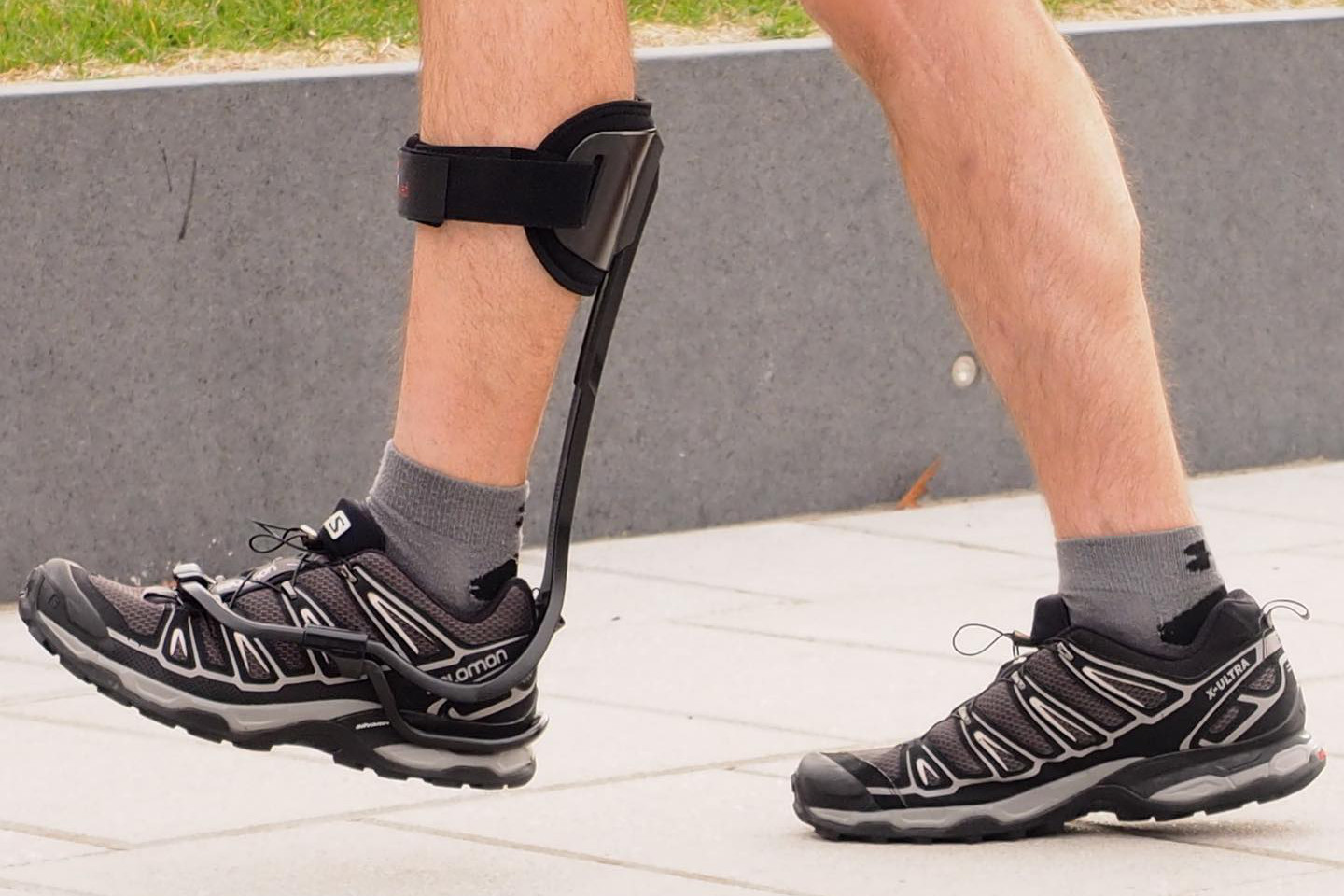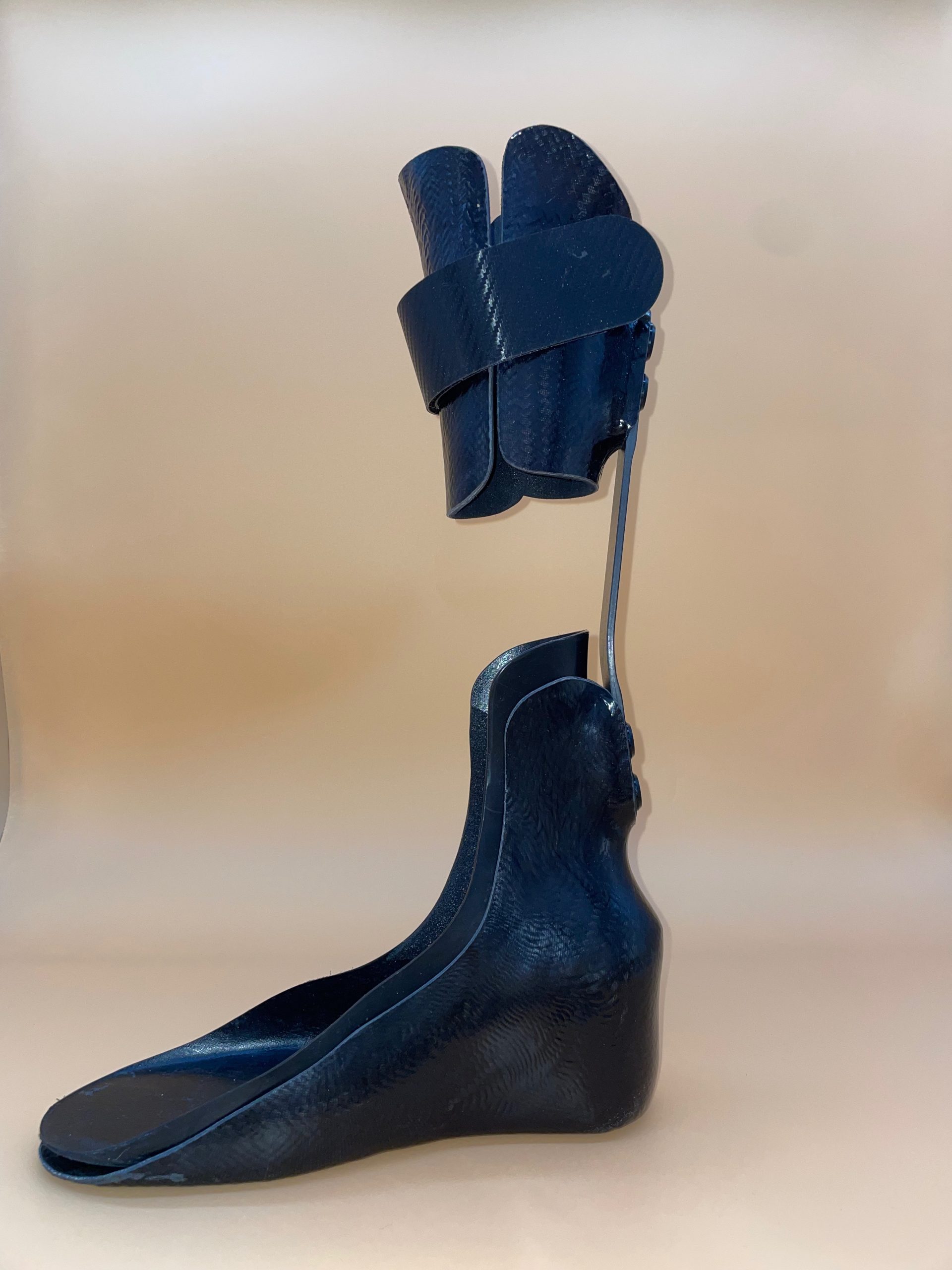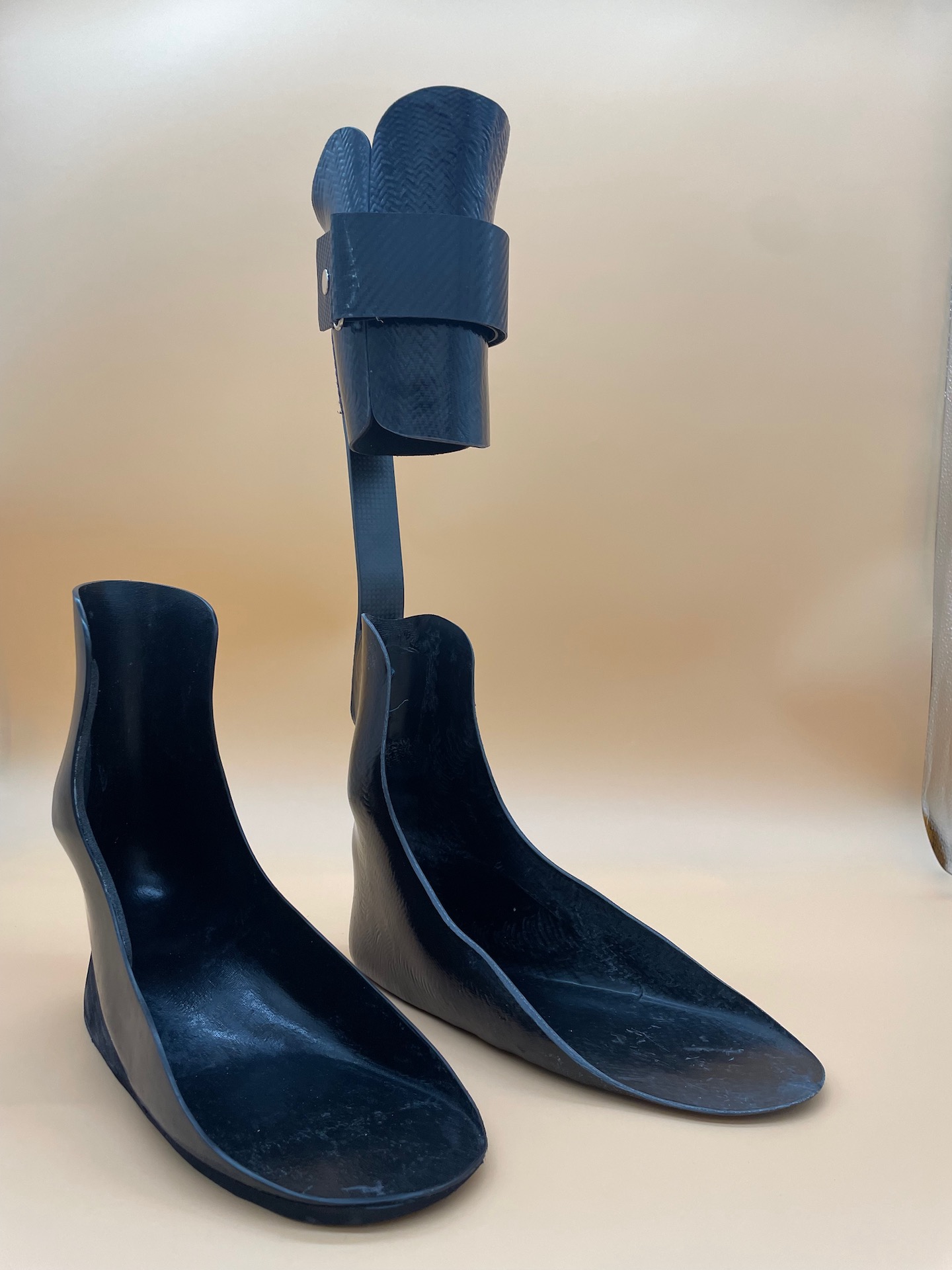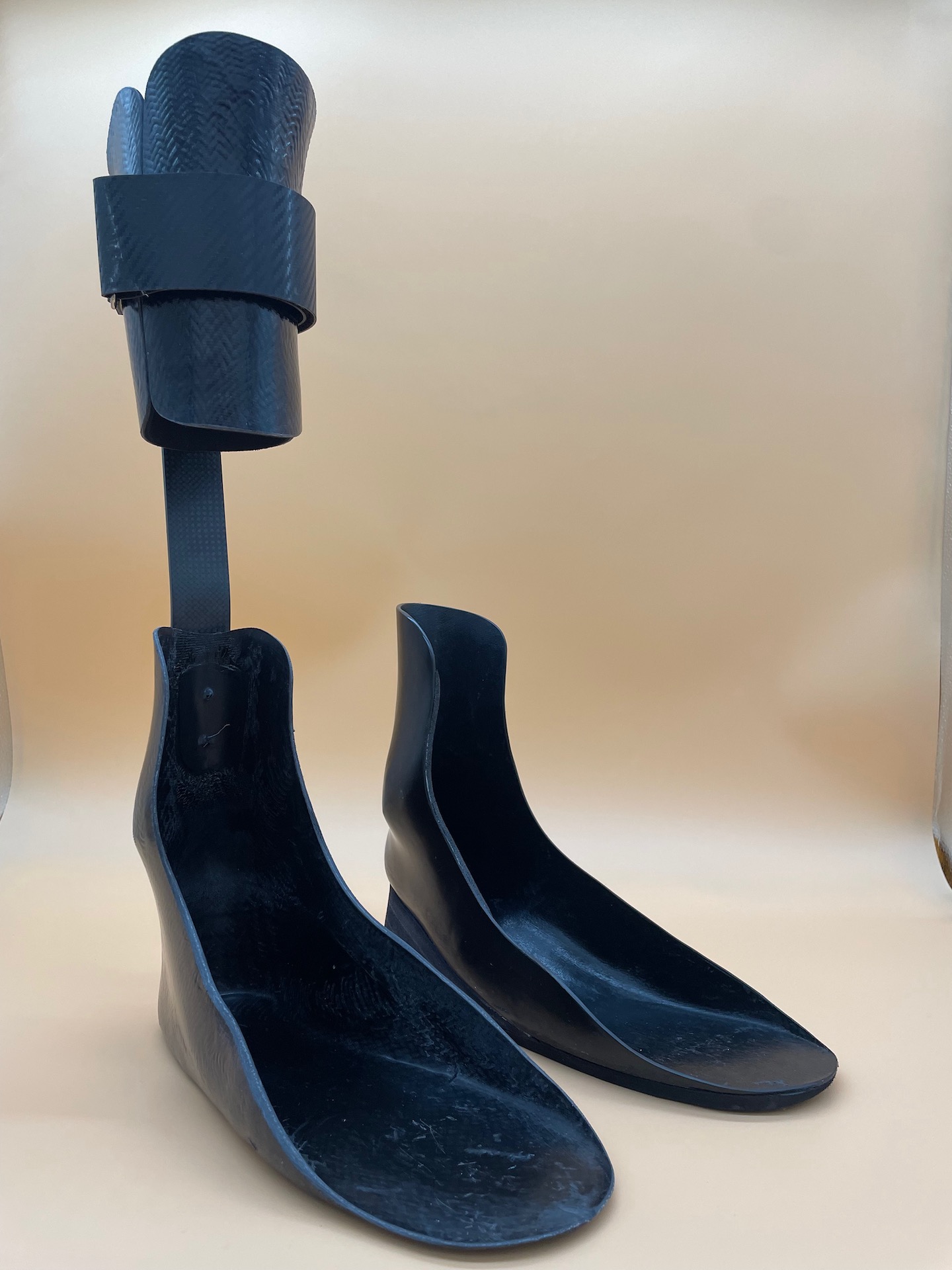What Makes a PDE AFO Unique Compared with Other AFOs?
PDE stands for Posterior Dynamic Element. This component is essentially a section of an AFO that can be interchanged and customised depending on the patient’s activity levels, weight and what they want to achieve.
A PDE is a strut that allows for controlled ankle movement and provides a great amount of energy return on walking, like a spring.
PDE AFOs come in different strut flexibilities: values one to six, with one being the most flexible and six being the most rigid. Depending on how much ankle movement we want for the patient, the flexibility can be adjusted to accommodate.

Is a PDE a Premade or Custom Product?
The PDE is the strut, which is prefabricated. The PDE slots into the calf shell and the foot and ankle section, which can be completely custom made and varies from patient to patient.
Appropriate Patients for AFO PDE Prescription
In most cases, AFO PDE are suitable for high–activity patients and commonly paediatrics.
We have prescribed these to children living with neurological conditions such as cerebral palsy to promote lower limb function. The PDE allows for a portion of energy storage that assists with propelling the person forward and may even allow them to run.

How an AFO PDE Works
Within the AFO PDE, there’s a housing that gets laminated into both the custom-made ankle and foot shell and into the calf shell. That housing is attached using screws, it can be removed and replaced with an alternative strut.
The strut comes in three different lengths: 20 centimeters, 25 centimeters, and 30 centimeters. The width is typically around two centimeters, and different options are available that provide varying flexibility.
The struts are typically made of carbon fiber, which can bend and return to its original shape. This also grants energy storage and return properties and provides adequate flexibility and strength to the ankle.
Contraindications
Patients are typically evaluated on a case-by-case basis.
For patients with a small amount of basic foot drop, a PDE is probably not necessary. It’s also not generally used if we want a joint to be completely locked. For example, for arthritic ankles when it’s best to have the joint fused, it wouldn’t be appropriate to wear a PDE.
PDEs are best used for high-activity patients who need frequent support for push-off movements and who require flexibility.

Patient Outcomes of an AFO PDE
Our goal is to grant the patient as much movement as possible. The PDE makes that possible. When fitting the device, we only influence the movement that we want to control, and allow free range of motion elsewhere.
PDEs are still relatively new, so many patients might not have seen or had an opportunity to use one previously.
Oftentimes, the PDE is an improvement to an older model AFO.
If indicated, we will create a custom PDE solution for the patient.

Book an Assessment at Orthotics Plus
Orthotics Plus is an NDIS registered provider, we are experienced with all types of AFOs and other Assistive Technology.
- We have multiple clinic locations
- Paediatric specialist staff
- We are kind and caring
- NDIS home visits available
Please use our clinic locations page to get in touch, we’d love to hear from you!

FAQ
PDEs are reasonably expensive devices. They can either be self-funded or be funded through NDIS. We could also consider a SWEP application, which would cover a portion of the cost for this type of AFO.
Our administration team at Orthotics Plus is happy to help patients with the most appropriate funding options.
These kinds of braces are generally worn long term by patients who need support due a physical or neurological disability. They’re not temporarily worn to support healing or movement following an acute injury.
The product will last in excess of 5-10 years, however, a person would receive reviews and likely receive a new model before then.
Depending on what’s required, a PDE can be worn on one or both feet.
A patient could also wear a PDE on one side and wear a different device on the other side depending on their situation.
PDEs are worn over the top of socks inside the shoes. Pants go over the top.